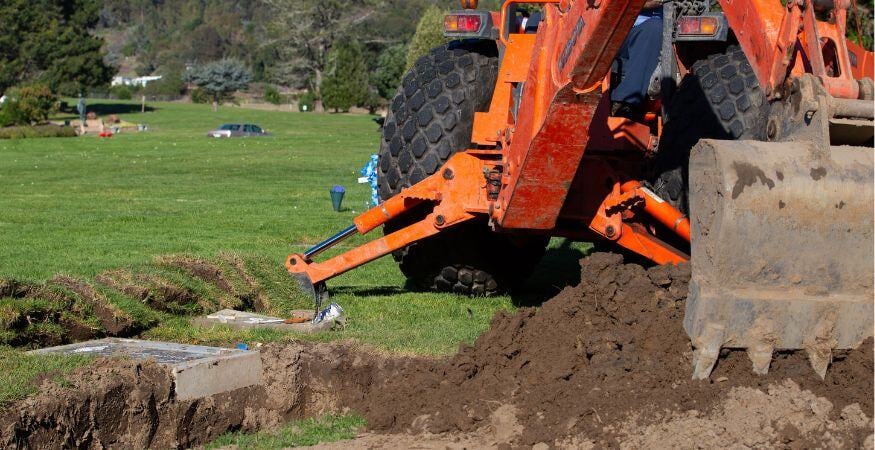| Read time: 8 mins
With dwindling land resources, growing environmental awareness, burial innovations, and evolving deathcare practices, grave reuse has increasingly become a talking point for deathcare providers globally.
Where, in Australia for example, the majority of jurisdictions have perpetual tenure as the default, some experts are proposing grave reuse or renewable tenure become the norm as a way of contending with the problem of ‘dwindling space’.
Source: abc.net.au
While there are state-specific nuances in terms of legislation and regulations, broadly speaking, most Australian states offer burial rights for these significant periods of time, while some allow for limited tenure, such as New South Wales [allowing for reclamation if not used after 50 years], although it’s not widely practiced.
In England and Wales, according to reports, warnings that cemeteries are running out of space, along with a rise in funeral costs have promoted calls for an overhaul of legislation dating back to the Victorian era.
The catch-22 scenario created here, as described by the ICCM is local authorities having a duty of care to maintain cemeteries but no money to do this without the ability to build new cemeteries due to a lack of space.
As such, experts would like to see a commitment from the government that legislative change makes it easier to reuse graves by “interring earlier burials deeper”, with relaxing planning restrictions for cemeteries being another potential solution.
Source: theguardian
Currently, in the UK, the Local Authorities Cemeteries Order 1977 (LACO) allows that burial authorities may “reclaim” rights in reserved graves purchased at least 75 years ago if the rights have not been exercised and the relevant notice has been given. LACO does not allow for any existing remains to be disturbed through this process.
For burial authorities in London, this differs. They may reclaim a private grave and then use the remaining space in it for the purpose of further burial, subject to similar conditions, and again without disturbing any existing remains.
However, London burial authorities also have power to disturb remains in private graves older than 75 years for the purpose of deepening the grave to allow further burials to take place.
Similar processes have also been enable through special legislation such as for Highgate Cemetery, or Bishop’s Stortford which in March 2024 became the first town outside of London where graves on unconsecrated land can be reused.
Sources: bills.parliament.uk/bills/3380 / bbc.co.uk
The method of reuse known as, “lift and deepen” entails any existing remains in the grave being lifted out, with the plot deepened, and the original remains reburied lower, leaving space for a new burial above.
According to Julie Rugg, head of the Cemetery Research Group at the University of York, "We are talking about graves that are at least 75 years old and where the probability is there will be nothing left there at all - there will have been full decomposition."
Source: itvNEWS
In the US, the landscape (both literally and figuratively) currently looks different; while the reuse of a grave already with an interment is uncommon, some states do allow for a cemetery to reclaim a plot after a number of years (typically 75 or 100) - after a somewhat lengthy process.
So while tenure laws vary from country to country, jurisdiction to jurisdiction or state to state, with a growing recontextualisation of the role of cemeteries, alongside existential issues around changes in burials practices, and the very real impact of dwindling space - conversations with families around grave reuse are potentially in everyone’s future.

Grave reuse in practice
For a real world example of what that looks like, let’s return to Australia - and South Australia (SA) specifically - where most cemeteries offer interment rights for a specific period - typically 50, to a maximum of 99 years.
(More recently, legislation has changed to allow cemeteries the option to offer perpetual tenure - such as in the case of Centennial Park in the southern Adelaide suburb of Pasadena).
Where grave use is in effect [in the main tied to renewable tenure] there are a number of regulatory considerations that point to best practice, with some potential challenges to overcome.
In the main, the process in South Australia will look like this:
A minimum of two years after a grave has expired, the cemetery has the right to reuse it. At this time, they must carry out a number of heritage checks to ascertain whether, for example, the deceased person holds some significance, was a veteran, or holds some cultural significance.
Once that process has finished, they must make all reasonable efforts to contact the family to provide the option to renew.
Herein lies a challenge - with some graves dating back many decades, contacting family members is not always straightforward - records may have been misplaced, people may have moved to other locations, etc.
Which is just one of the many reasons why having records that are up to date is essential.
To aid in the search, cemeteries will place notices in local newspapers or notices at the graveside, and if it’s a no, or if efforts to contact have been unsuccessful, the grave can be prepared for resale.
Improvement processes may typically involve placing a concrete beam within the grave, with the remains staying in the grave.
Similarly, in the UK, technical guidance is given for the ‘lift and deepen’ method, under specific legislation, where existing remains are lifted, the plot deepened, and the remains replaced, leaving space above for a new burial.
And so too in SA, with remains lowered to an ossuary level, creating space above for 3 more burials.
New buyers are made aware of this.
[In Western Australia, rather than this ‘lift and deepen’ method within the same grave, new burials are sometimes placed between existing ones].
For ash reclamation in SA, after a typical tenure of 30 years, families can be given the option to take the ashes, or if not they are moved to an unmarked location.
The decision to renew can of course be influenced by a number of factors - not least of which is the cost - especially that of a renewal in perpetuity - and certainly worth pause for thought, especially when the relative may be many years removed from the current generation.
How PlotBox can help
Now we know the what, we can look at the how. The right tools to manage this process will help make your life and the lives of your customers much easier. And that’s where a software solution like PlotBox can help in a number of specific, practical ways.
Deed management and reporting
Plot tenure and ownership means having clarity and control over deed management - from deed expiries, to interment capacities, to transfer of ownership - all of these can be viewed, searched and managed easily from within PlotBox.
There are a number of ways that you can check expiring deeds, either via the dashboard or through the deeds module itself.
By selecting a date range, you can quickly and easily generate a ‘deeds expiry report’.
Why is that important? This allows you to see at a glance those deeds that may be subject to reuse or reclamation; going back to our point regarding contacting families - now you can generate letters or emails that allow you to communicate with them via a single, streamlined process.
Key here is that it also provides you with evidence that you have made all efforts to make contact - whether an attempt to contact has failed, for example, thus providing you with that all-important audit trail.
The reclaim process
Within PlotBox is also the provision to create workflows that ensure that all of the required checks and balances in reclaiming the plot are made.
Once you have generated the expiry report and selected the relevant deed, you can create a ‘deed reclaim’ workflow that will create a work order for the relevant team to carry out tasks that are necessary to complete reclaim.
You can see all of the relevant information to ensure the work is being carried out, including the status, and who it has been assigned to, as well as the ability to specifying the release type and date - for example whether it is to be made available immediately, or put on hold while you develop it further,
The ability to upload related documents, for example, a scanned copy of the advertisement posted, again adds to your audit trail, showing the actions taken in relation to the grave reclaim.
Plot status
Digital maps provide a wide range of benefits - here they can give you a quick view of the status of each of your plots, helping you to plan out your inventory.
Pick a section of your cemetery, select a row with that section, and view statues - now you can create a campaign to reclaim plots or rows within that section - opening up your inventory and better managing the space you have available.
Untapped inventory
Speaking of which, having this clear, real time view of plot status, as well as a good handle on deed ownership, can also help to ensure that unexercised interment rights are being turned into inventory for purchase - plots purchased well in the past, lying vacant are easily overlooked - now they can be entered back into stock with the right to reclaim.
Whether grave reuse is in the here and now for you or not, the ability to manage your deeds and your inventory more effectively will ultimately help to sustain your long-term growth and sustainability.
For more, visit www.plotbox.com
Discover 7 more benefits of digital transformation. Download our eBook:

